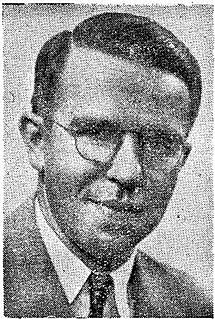The Buffalo Book Company
Kenneth J. Krueger, a science fiction fan and book seller from Buffalo, New York, was drafted in 1945 and eventually stationed near Providence. [3] Krueger joined the venture bringing with him a mailing list from his book selling business. At this point, Donald Grant had also entered the military [1] and was stationed in Texas. [3] Krueger talked Tom Hadley into changing the name of the publisher to The Buffalo Book Company. [1] The first book published by The Buffalo Book Company was The Time Stream , by John Taine. According to Jack Chalker, the book did not sell well [3] which delayed their second publication of The Skylark of Space by E. E. Smith. On the other hand, Robert Weinberg states that: "While neither book was particularly well put together or packaged, they sold well, especially the Smith title. [4]
Ken Krueger was an American publisher and retailer. Krueger co-founded and organized the first San Diego Comic-Con International convention, then called "San Diego's Golden State Comic-Con," in 1970. Krueger co-created the annual convention with a group of San Diego friends, including Shel Dorf, Richard Alf and Mike Towry.

Buffalo is the second largest city in the U.S. state of New York and the largest city in Western New York. As of July 2016, the population was 256,902. The city is the county seat of Erie County and a major gateway for commerce and travel across the Canada–United States border, forming part of the bi-national Buffalo Niagara Region.

Texas is the second largest state in the United States by both area and population. Geographically located in the South Central region of the country, Texas shares borders with the U.S. states of Louisiana to the east, Arkansas to the northeast, Oklahoma to the north, New Mexico to the west, and the Mexican states of Chihuahua, Coahuila, Nuevo León, and Tamaulipas to the southwest, while the Gulf of Mexico is to the southeast.
Works published by The Buffalo Book Company
- The Time Stream, by John Taine (1946)
- The Skylark of Space by E. E. Smith (1946). This title had originally been proposed as a book by William F. Crawford back in 1935.
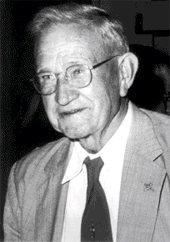
Edward Elmer Smith, better known by his pen name E. E. "Doc" Smith, was an American food engineer and science-fiction author, best known for the Lensman and Skylark series. He is sometimes called the father of space opera.
This page is based on this
Wikipedia article Text is available under the
CC BY-SA 4.0 license; additional terms may apply.
Images, videos and audio are available under their respective licenses.
Donald M. Grant, Publisher, Inc. is a fantasy and science fiction small press publisher in New Hampshire that was founded in 1964. It is notable for publishing fantasy and horror novels with lavish illustrations, most notably Stephen King's The Dark Tower series and the King/Peter Straub novel The Talisman.
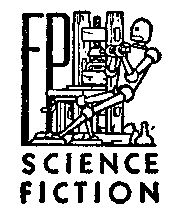
Fantasy Press was an American publishing house specialising in fantasy and science fiction titles. Established in 1946 by Lloyd Arthur Eshbach in Reading, Pennsylvania, it was most notable for publishing the works of authors such as Robert A. Heinlein and E. E. Smith. One of its more notable offerings was the Lensman series.

Invaders from the Infinite is a science fiction novel by American writer John W. Campbell, Jr.. It was simultaneously published in 1961 by Gnome Press in an edition of 4,000 copies and by Fantasy Press in an edition of 100 copies. The book was originally intended to be published by Fantasy Press, but was handed over to Gnome Press when Fantasy Press folded. Lloyd Eshbach, of Fantasy Press, who was responsible for the printing of both editions, printed the extra copies for his longtime customers. The Fantasy Press edition was issued without a dust-jacket. Eshbach eventually did produce a jacket in 1990 at the urging of George Zebrowski. The novel is an expansion of stories that originally appeared in the magazine Amazing Stories Quarterly.
Donald Metcalf Grant was an American publisher.

The Time Stream is a science fiction novel by American writer John Taine. The novel was originally serialized in four parts in the magazine Wonder Stories beginning in December 1931. It was first published in book form in 1946 by The Buffalo Book Company in an edition of 2,000 copies of which only 500 were ever bound. It is the first novel to see time as a flowing stream.
Prime Press, Inc. was a science fiction and fantasy small press specialty publishing house founded in 1947. It published a number of interesting science fiction books in its brief four-year lifespan.
Shasta Publishers was a science fiction and fantasy small press specialty publishing house founded in 1947 by Erle Melvin Korshak, T. E. Dikty, and Mark Reinsberg, who were all science fiction fans from the Chicago area. The name of the press was suggested by Reinsberg in remembrance of a summer job that he and Korshak had held at Mount Shasta.

The Checklist of Fantastic Literature is a bibliography of English science fiction, fantasy and weird books compiled and edited by Everett F. Bleiler with a preface by Melvin Korshak and a cover by Hannes Bok.
Fantasy Publishing Company, Inc., or FPCI, was an American science fiction and fantasy small press specialty publishing company established in 1946. It was the fourth small press company founded by William L. Crawford.
William Levi Crawford was an American publisher and editor.
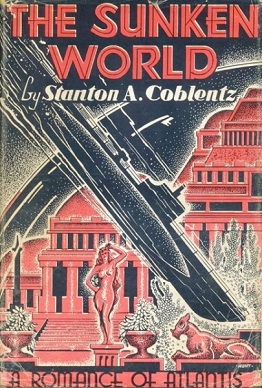
The Sunken World is a science fiction novel by American writer Stanton A. Coblentz. It was first published in book form in 1948 by Fantasy Publishing Company, Inc. in an edition of 1,000 copies. The novel originally appeared in the Summer 1928 issue of the magazine Amazing Stories Quarterly. It was Coblentz's first published science fiction novel.
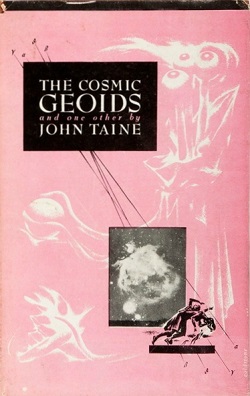
The Cosmic Geoids and One Other is a collection of two science fiction novellas by author John Taine. It was first published in 1949 by Fantasy Publishing Company, Inc. in an edition of 1,200 copies. The title novella is a loose sequel to Taine's novel, The Time Stream, and was later serialized in the magazine Spaceway, in three parts beginning in December 1954. The other novella, "Black Goldfish", was first serialized in the magazine Fantasy Book, in two parts beginning in 1948.
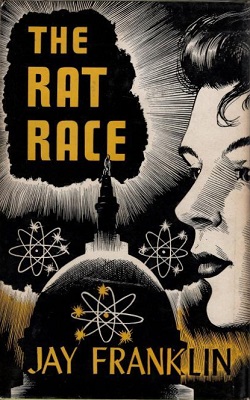
The Rat Race is a science fiction novel by Jay Franklin. It was first published in book form in 1950 by Fantasy Publishing Company, Inc. in an edition of 1,500 copies of which 1,200 were hardcover. The novel originally appeared in the magazine Collier's Weekly in 1947.

The Iron Star is a science fiction novel by American writer John Taine. It was first published in 1930 by E. P. Dutton.

Green Fire is a science fiction novel by American writer John Taine. It was first published in 1928 by E. P. Dutton. The novel was adapted and produced as a play.

Lovecraft's Providence and Adjacent Parts is a book by Henry L. P. Beckwith, Jr. detailing sites in Providence, Rhode Island related to H. P. Lovecraft. It was first published by Donald M. Grant, Publisher, Inc. in 1979 in an edition of 1,000 copies. The book grew out of a bus tour of Providence that Beckwith held as part of the World Fantasy Convention. Sites detailed include a graveyard where Edgar Allan Poe once walked and the inspiration for Lovecraft's story "The Shunned House". A revised and expanded edition was published by Grant in 1986 and again in 1990 for Lovecraft's centennial.








